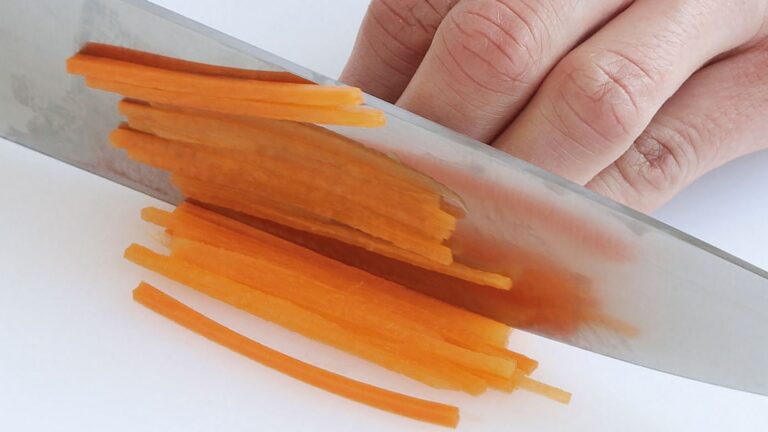This versatile root adds sweetness to stocks and stews; is steamed, sautéed or roasted as a side dish; or served raw grated in salads. Carrots work well with parsley and thyme, and aromatic spices such as cumin, coriander and cinnamon.
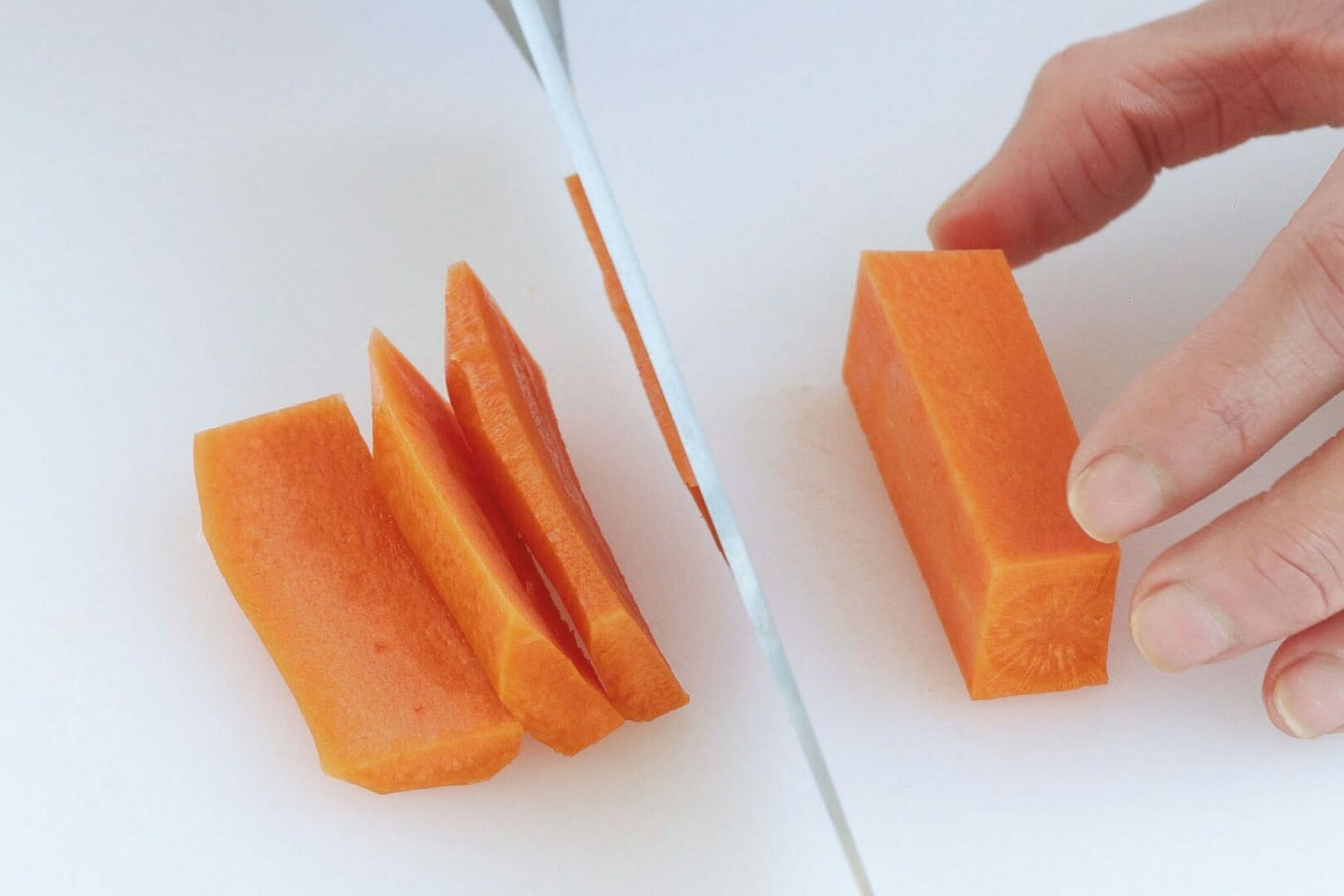
1. Blocking carrots: Wash and peel the carrot and trim off the top end. Cut the carrot into 4 finger-width pieces. Cut off a side of the carrot. Turn it and repeat on all other sides to create a rectangular block of carrot. (Reserve any trimmings for stock.)
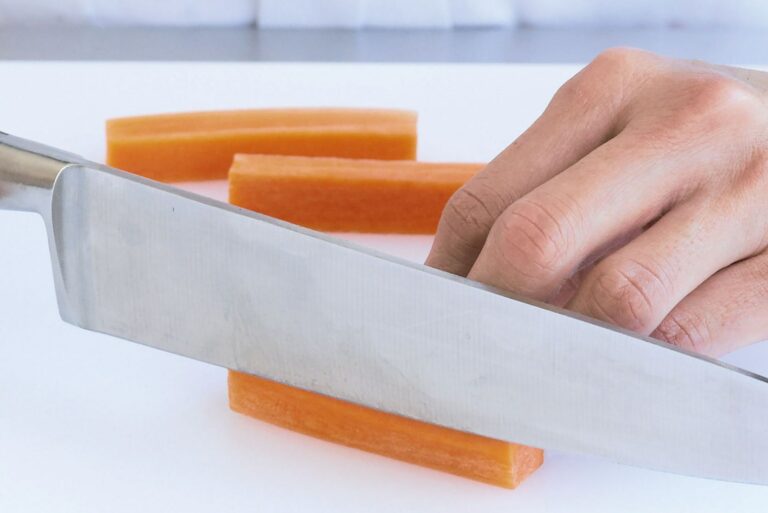
2. Batons: Cut the blocked carrot into batons or sticks, 5 – 6.5cm long and approximately 1cm square. For smaller batons, or allumettes, cut each large baton lengthways into 4 thinner sticks, about 5mm square.

3. Julienne: Cut the blocked carrot into very thin slices (1 – 2mm thick) and stack them neatly. Slice through the carrot as uniformly as possible to create julienne.
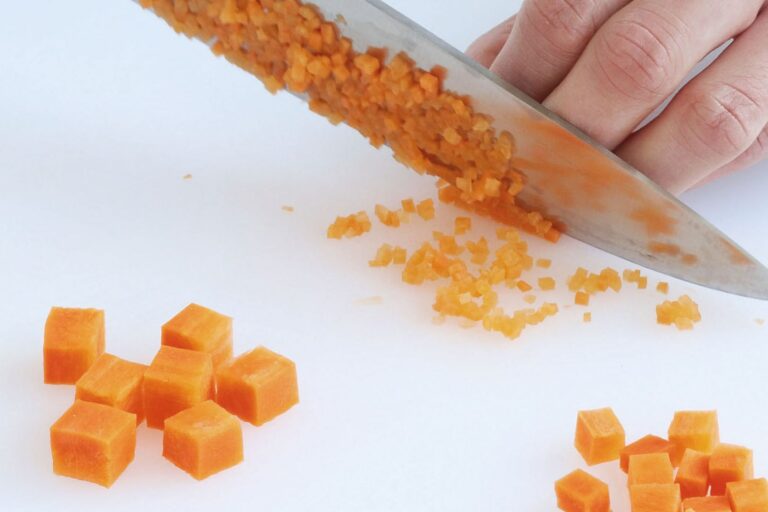
4. Dice and brunoise: Cut across batons to form uniform dice (left); the carrot should be perfectly square in shape. Cut across allumettes to form brunoise (right). Cut across julienne to form fine brunoise (top).
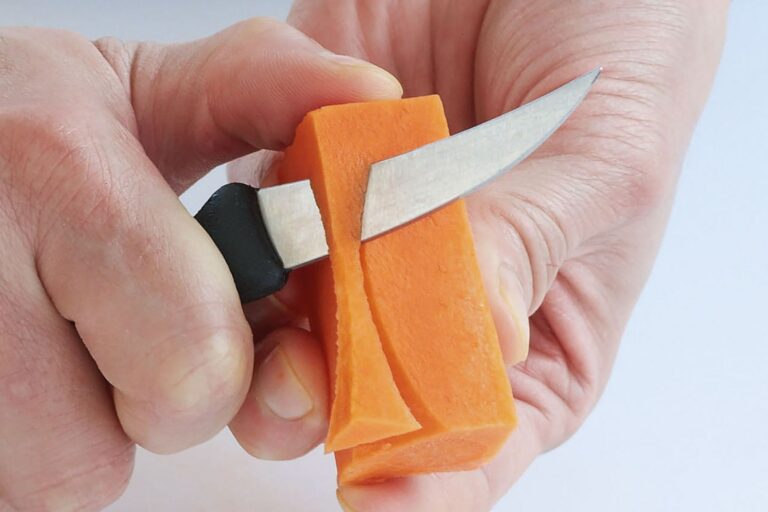
5. Turning carrots: Peel and block the carrots. Remove each corner, then holding the carrot in your hand, insert a small, sharp knife quite deep at the end of the block, then draw the knife gradually up towards you until you reach the middle of the block, then down and away towards your thumb.
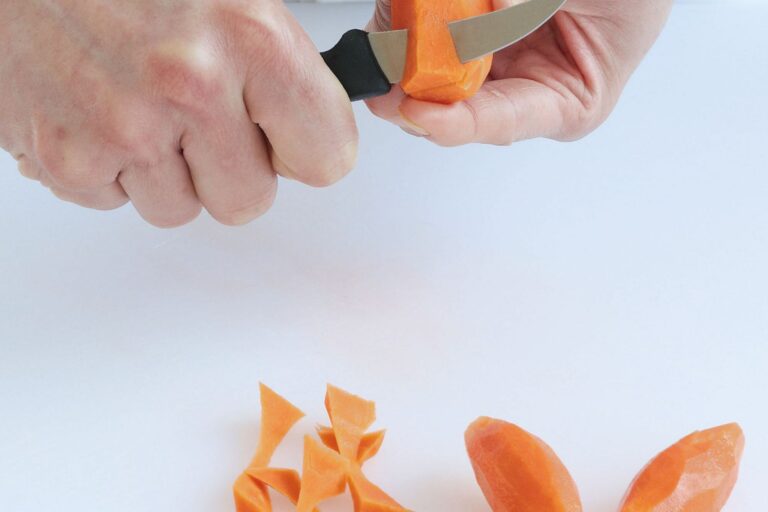
6. Turning carrots continued: Trim the remaining sides in the same way to create the basic 5- or 7-sided barrel shape. Use trimmings in stocks and soups. Turned vegetables are consistent in size for even cooking and elegant presentation. Any firm vegetable can be turned and with some (such as courgettes), the skin is retained on one side to provide colour.
